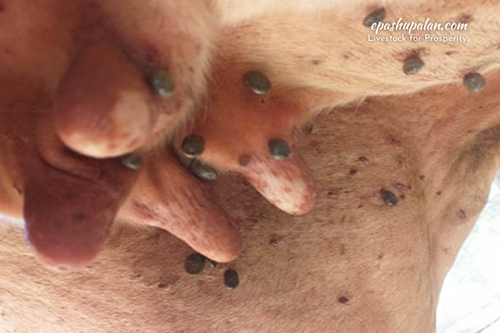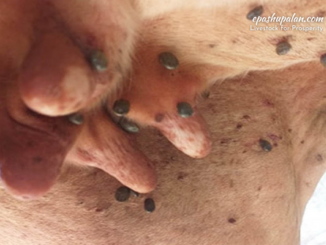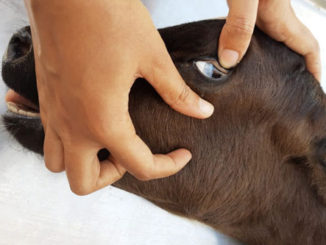Even when the country is transitioning to a largely secondary and tertiary economy, livestock farming still holds significance for Indian economy, contributing to 5.1 per cent of gross domestic production of India. With 303.75 million bovines, India boasts of the highest bovine population in the world, however, the productivity per animal is very low, compared to developed nations. A major impediment to livestock production is ectoparasite infestation.
Ticks are external, temporary and obligate parasites of vertebrate animals which need to feed on blood in order to live. The hot and humid climates favour their survival; thus, bovines are most prone to tick infestation during rainy season. Ticks are one of the biggest public health and veterinary problems in the India. These ectoparasites can impact the production and health of the animals, either directly by the effect of their bites or by the infectious agents they transmit, which include viruses, bacteria, rickettsiae and protozoa. The losses caused by the infestation with ticks and the associated diseases and the control of it, have been calculated at USD $13.9–18.7 billion per year worldwide.
Ticks affect 80% of the cattle population of the world. Specifically, Rhipicephalus microplus (formerly Boophilus microplus) is the tick that has the greatest economic impact, due to its wide distribution, vector capacity, blood-sucking habits and the number of cattle that affects.
Ticks usually prefer places on the body of animals where the skin is thin and short, and have abundant blood supply, such as the inguinal region and external genitals. Ticks grow and develop best in hot and
humid climates. Due to its great capacity for adaptation and propagation, ticks of the genus Rhipicephalus have been able to spread in various geographical areas around the world. Approximately 1 billion bovines are in areas at risk of being affected by these parasites.

The economic impact is strongly linked to the epidemiology of the disease and can be distributed in direct and indirect losses.
Direct effect of bovine tick infestation on production includes:
- Damage to the skins by biting, especially in highly infested cattle.
- Blood loss associated with high parasitic loads, anaemia.
- Severe immunological reactions by the inoculation of toxins.
- Permanent stress that affects the behaviour and welfare of the animal, which also leads to depression of the immune function.
- Loss of energy associated with the constant movement that occurs in response to infestation.
Indirect losses are related to the effects of blood parasitic diseases such as Babesiosis, theileriosis and anaplasmosis. Common signs associated with hemoparasitic disease are:
- Fever
- Hemoglobinuria
- Anemia
- Decreased appetite
- Reduction in milk production
- Lower weight gain
- Loss of body condition,
- Reproductive effects in males and females, abortions in the last third of gestation, lower pregnancy and birth rate
- Death in some animals
Other indirect losses correspond to
The cost of treatment for clinical cases.
- Expenses incurred in the control of ticks.
- Unearned income or inefficiencies in the production system.
- Use of genetically resistant breeds to ticks but less productive.
- Confiscation by acaricide residues in meat or milk.
- Trade restrictions of animals between areas and countries.
Prevention and Control of ticks in Bovines
In bovine animals, the main tool for the control of ticks is still the use of acaricides (chemical control). However, for years it has been suggested that the exclusive strategy of chemical control is inadequate due to the possible development of resistance. The incorrect use of pesticides such as the use of sub-doses, inadequate preparations and erroneous applications cause the failure of the treatment. With this, whenever the ticks survive the applications of the different products used, they transmit to the later generations genetic information about the active principle of the drugs, causing resistance to subsequent generations. The excessive use, the incorrect dosage and the decrease in the interval between the applications, has generated in addition to problems of resistance, the presence of chemical residues, both in the meat and in the milk, as well as the increase in production costs.
In order to reduce the possibility of resistance, an integral control of ticks whose strategies include:
- Vaccination
- Rotation of acaricides, with active ingredients that have different mechanisms of action, and without cross-resistance potential.
- Correct application of acaricides, in recommended doses and intervals of time.
- To use products with proven effectiveness; in addition, the complete elimination of ticks in cattle by the pesticide should be avoided.
Different classes of acaricides (organochlorines, organophosphates, carbamates, pyrethroids and amidines) have been used successfully to control ticks in cattle, but some factors such as environmental damage, adverse effects on health (carcinogenic effects), as well as problems of resistance have caused that in some cases its use is limited.
The rational use of the traditional and new generation chemical molecules, through the correct dosage and rotation of the active ingredients on the market, allow extending the use of this control alternative, avoiding the resistance on the part of the ticks.
In order to improve the effectiveness of tick control, it is now possible to find on the market, products that mix different active ingredients. It is reported that some pesticides such as macrocyclic lactones (ivermectin, doramectin, moxidectin), fipronil, spinosad and fluazuron are very effective in ticks control.
Other strategies of an integral control program of ticks are:
- Manual elimination (only practical on farms with small number of infested animals).
- Use of breeds resistant to ticks and the pathogens they transmit
- Release of sterile male ticks.
- Sowing of plants that are unfavorable for ticks.
- Rotation of pastures with forced breaks in order to interrupt the life cycle of the tick.
- Burning of pastures, exposing the different stages of the ticks at high temperatures, and eliminating the vegetation that protects them.
- Quality animal nutrition to improve resistance to ticks.
- Use of plant extracts and essential oils with acaricidal activity.
- Vaccination
- Biological control with nematodes, entomopathogenic fungi, ants and birds.






Be the first to comment